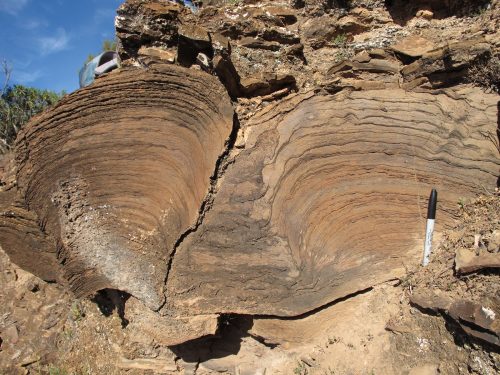Have you ever marveled at the diversity of life on Earth? Over the past 500 million years, the development of new environmental niches has played a huge role in the diversification of plants and animals. These macro-organisms have colonized new continents and expanded to various habitats, developing novel evolutionary adaptations that led to radiation of species. But what about the microbes? Even though we cannot see them with our naked eyes, they have evolved for a much longer period of time: the last 4 billion years. A team of researchers sought out a possible explanation for their diversification in ancient rocks.
Led by Eva Stüeken at University of St. Andrews, the team investigated whether the diversification of microbial populations was also prompted by the expansion of environmental niches. They studied five formations in the Neoarchean lower Fortescue Group located in Western Australia. The depositional settings possess distinct hydro-geologic properties, meaning that they differ in what elements they are made out of, and whether water constantly flowed in and out of the lakes. But they were all formed about three million years ago, which assures that any diversity in microbes observed by the researchers is due to the difference in habitats and not time. In order to assess the biological and geological properties of the formations, they gathered samples from drill cores and measured traces of different elements.
This allows the researchers to identify the type of bacteria that lived in the region. When some bacteria eat, they change the type of carbon left in the environment, while other bacteria change the type of sulfur. If researchers found more of a certain type of carbon or sulfur, then they would be fairly certain that the corresponding bacteria was once in the area.
After these measurements, the researchers concluded that geographic and hydrologic parameters indeed impact the diversification of microbes. For example, Mt. Roe Formation is made out of basaltic rocks that can react with water to generate methane. The researchers examined the site’s carbon isotope values and inferred the presence of methanotrophs, bacteria that use methane as their main source of energy. Similarly, they found evidence of different metabolisms present in other formations with various environmental properties. This is because distinct minerals release different types of elements, which shape the biological pattern of microbial populations as the organisms evolve to utilize different nutrients.
“It is a pretty new concept that environmental diversification may have triggered microbiological diversification”, Stüeken said. In fact, the implications of the research extend even to astrobiology, in the effort to find extraterrestrial life. Based on the data, it may be important to focus on planets with diverse environments. “If you have a planet that only has a big ocean and no land masses, then it would perhaps be much more difficult to develop a diverse biosphere,” Stüeken said. Since there are fewer niche spaces, there would also be fewer types of bacteria.
Naturally, there were challenges that followed the study of ancient rocks. The scientists had to work with the possibility that the rocks could have been metamorphosed from the exposure to great heat and pressure over the years, potentially skewing the data. Gathering samples was also difficult, as they are quite weathered and scarce. Still, the researchers hope to further the study by analyzing older and younger rocks with a similar method by comparing marine rocks to non-marine rocks. This work opens a new window into the field and is an important step towards acknowledging the effect of environmental diversity on biological diversity.

